Introduction | High Speed Photography | Photo Montage | Painting and Photography | Wood Sculpture | Limestone Sculpture | CV
High Speed Photography 1992-2000
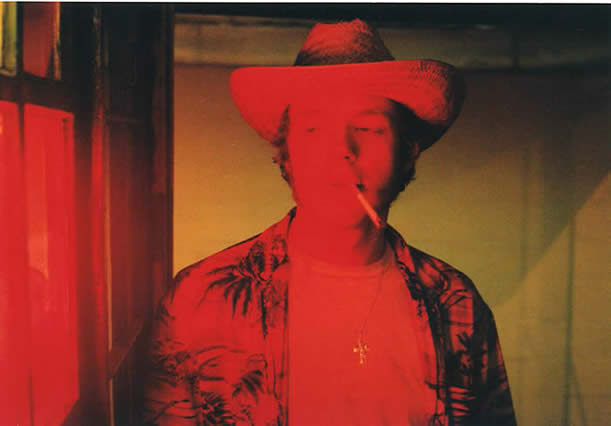
Buckaroo Disciple Louisville, Kentucky U.S.A.
I taught art at Kenyatta University, outside Nairobi, Kenya from 1989 to 1991. When I returned to the U.S., and began to make art again, I asked myself, what kind of art? I knew that it had to be something new. When pondering this question, I kept coming back to a conversation I had in Kenya with my colleague, Francis Msangi. We were sitting in his office and I was telling him that I didn’t like it when our students painted a tear drop to represent human suffering. He asked me what I would have them paint instead. I said I’d like to see something more thought provoking, something less obvious. Francis stared at me and said, “Caren, you have to understand, we don’t have the time or the resources to be vague about communicating our points.” That day I learned abstraction was a luxury. Living and working in East Africa for three years, I found out that almost everything was a luxury.
So, I definitely wanted to make art that was straight forward. Other concerns were time and money. I had just started teaching at Bellarmine and it seemed like all of my time went into prepping for classes that first year.
I’d been noticing that at night when a traffic light changed near my house that everything on the whole street corner turned green and then yellow and then red. I thought, hmmmm, maybe I could capture that on film. And maybe it could work on people too. I remembered that I had two old rolls of 1600 ASA film that someone had brought to Kenya and left with me and for some odd reason I had packed them back to the states. So I did manage to capture the traffic light lighting on things and people and it looked interesting and photography became my new focus. Specifically, high speed night work.
I started in my neighborhood and then branched out into the city. Next I went to a conference in Chicago and shot in the evenings. I then visited friends in NYC and shot in Manhatten and Brooklyn. I began to see that not only was this work rendering me really interesting images but it also allowed me to meet people with whom I would never cross paths. And I liked it. And, I realized that it gave me the same high that I experienced when I traveled and worked abroad. The process made me a more open and interested person and in turn it made the people I photographed feel the same way. When you are happy to be in the presence of others and they feel the same way, it is the ultimate human connection. If rejection is truley everyone’s worst fear then my models and I were embracing the opposite karma, acceptance.
The other advantage with this work was that it was so immediate. By utilizing a one hour photo store and Kinkos, I had 11” x 17” prints very quickly.
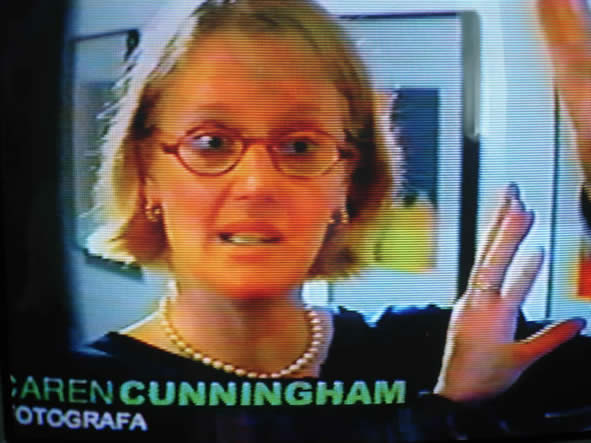
The Artist On Peruvian TV Explaining Her Process
High Speed Photography - The Process
The photographs in this series were shot in eleven countries using the existing light and color. I found that people relaxed at night. They were willing to take time with me, to tell me their stories and to be photographed. At night, I am attracted to the color of artificial light which, when captured with high speed film and softened by laser printing, provides the storytellers and their characters with an environment that is somehow otherworldly.
Electricity and lighting interested me from both an aesthetic and cultural viewpoint. In our American culture we light things up for unusually paradoxical reasons ie. warnings and invitations. Light, like abstraction, is a luxury.
I began a photo session by seeking places where people congregated or passed. I would then scan the faces for someone who looked visually interesting. Next, I looked for light sources, preferably a colored neon light, but many light sources could suffice. I then spoke to the subject and asked for permission to photograph him or her and escorted them over to the light.
Taking photographs at night was often difficult, especially in a foreign country. Besides the cultural barriers, there was sometimes a language barrier. My methodology was to establish a system of confidence and partnership for each different photo shoot and location. Whether it was in Lima, Helsinki, New York, Cairo, or Hong Kong, I had to put my subjects at ease and gain their trust. This was sometimes achieved on my own, but it often required assistance from a translator. I had my life threatened more than once. I was accused of being a propagandist and a spy. I had a mob of people turn on me. And I had been chased after. But, the majority of people in all countries had been overwhelmingly cooperative and interested in participating.
Although the individuals in my photographs are astonishingly diverse, the manner in which I present their images communicates a reality that transcends gender, race, religion, and age. As a reviewer for the Helsinki Sanomat newspaper wrote, “The people stripped of their own environment echo some kind of universalism.” I purposely avoid the cliche’ shot as I do not want the viewer to focus on a stereotype. I want the viewer to feel the soul of the individual and then personalize that feeling.
My portrait photography was a collaboration that required an unspoken trust between artist, model, and viewer. All were necessary elements for success. It is said that there is no real looking without being looked at. It is for this reason, I made every effort to get 4” x 6” photos to the participants. I carried a notepad and wrote down names and addresses at the time of the photo shoots and followed up later when I had prints, envelopes, and postage. All models were also invited to the exhibitions whenever possible. It was my hope that this part of the process brought clarity and understanding to the individuals who so graciously posed.
Photographic Technical Elements:
• existing light and color
• no tripod or flash
• images are shot between 9:00 p.m. and 2:00 a.m.
• the models were strangers met on the street
• Kodacolor Gold 1600 and Fujicolor 1600 Super HG
• a PENTAX "Super Program" 35mm camera with LCD shutter panel
• a PENTAX 50 mm "A" lens
• an f/stop between f/2.0 and f/5
• exposures between 1/15th to 1/60th of a second
• most photos taken outdoors
• one hour photo developing
• Kinkos Canon 11” x 17” color copier prints
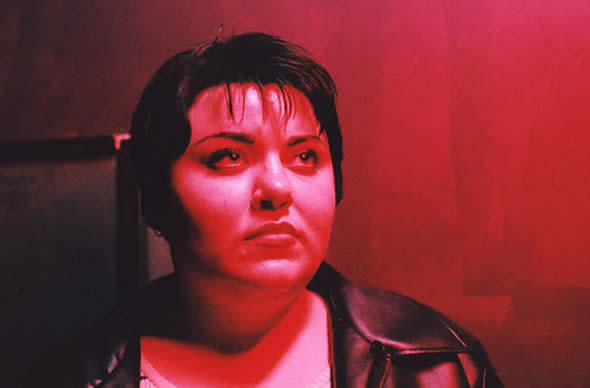
The Karioke Singer Louisville, Kentucky U.S.A.
High Speed Photography Venues
Solo Exhibitions:
2000 Bellarmine University, Eight Years of Inquiry, Louisville, KY, U.S.A.
I believe it is important for me to occasionally exhibit at Bellarmine for the sake of my students and the Bellarmine community. Eight Years of Inquiry was a summary of my eight years of night photographic portraiture. I exhibited 24 framed images complete with stories as told by the models. This body of work now numbers over 200 photographs worthy of exhibiting.
_______________________________________________________________________________________
1999 Centro Cultural de la Municipalidad de Miraflores, Retratos De La Noche, Lima, PERU
This exhibition was the equivalent of two shows as over 40 pieces comprising two bodies of work were displayed, including 30 framed photographs and 12 photomontages. A more thorough explanation of this show will be found under the photo montage link.
*Gallery director, Luis Lama, peer-reviewed this work via portfolio and accepted it for exhibition.
________________________________________________________________________________________________________________________
1998 Laterna Magica Photogallery, Yolla, Helsinki, FINLAND
Laterna Magica is a for-profit gallery which exclusively exhibits photography. It is located in an older section of downtown Helsinki. The gallery has an eerie cave-like atmosphere, which enhanced my night photographs. Many Finns believe Laterna Magica to be the best venue in the country for exhibiting photographs. The reception for this show included guests from the U.S. embassy staff, as well as many prominent Finnish photographers and artists. This show received a small amount of press as the competition for print is fierce. In fact, The Laterna Magica dealer, Mikko Pekari, was elated upon procuring a paragraph in the visual arts column of the national newspaper, Sanomat.
Mikko asked me to come to Finland before the exhibition to photograph Finnish people for inclusion in the show. I complied and researched ahead to insure that my Fuji 1600 ASA film would be available. My second day in Helsinki I went to ten photo stores and found no 1600. Apparently it is only stocked in winter during the long days of darkness. I ended up calling Fuji Sweden and they mailed me an entire case for free. This I shot in both Finland and on two visits to Estonia. I was able to include three Finnish portraits in the show after a lot of hustling around Helsinki to get the shooting and processing and proper printing made. I think Mikko was right to ask for Finns in the show. The Finnish people are without a doubt the most nationalistic group I have ever met and they definitely enjoyed seeing their own.
*Gallery dealer, Mikko Pekari, peer-reviewed this work via portfolio and accepted it for exhibition. My portfolio presentation and subsequent gallery contract was handled/supplied by a Finnish dealer/lawyer acting on my behalf.
_______________________________________________________________________________________
1995 Fujian Polytechnic, Caren Cunningham - Photographs, Fuzhou, CHINA
This show was sponsored by the exclusive Fujian Photographic Society. I met with one of the leaders of this group shortly before I left China in 1994. After months of negotiations, a venue and date were set. The Society successfully appealed for government funds and framed 40 of my photos and purchased an interior and exterior announcement banner. The show had an opening reception complete with a dinner for the Fujian Photographic Society. This exhibition was enthusiastically received by the general public, the students of Fujian Polytechnic, and various provencial dignitaries and politicians. The graphic arts students even designed posters which accompanied the exhibition. It was a thrill for me to be one of the first (perhaps the first) Western artists to exhibit in this province of China. I was told by the organizers that seeing portraits of people from other parts of the world, was a first for many of the viewing public.
For 1995 China, producing this exhibition was a phenomenal act of courage and chutzpah on behalf of the Fujian Photographic Society. I was honored beyond belief that they should go to such measures to show my work.
*The Fujian Photographic Society, peer-reviewed this work as a collective group via portfolio and accepted it for exhibition.
_______________________________________________________________________________________
Group Exhibitions:
1998 Fusion>Art=Technology 2, Invitational, Bank One Gallery, Louisville, KY
Installations:
2000 Crescent Hill Library, Louisville (one-month exhibition of nine framed photographs)
1998 UPS Executive Headquarters, Louisville (two-month installation of ten framed photographs)
1997 Crescent Hill Library, Louisville (one-month exhibition of nine paintings)
The following are examples of my photographic research.
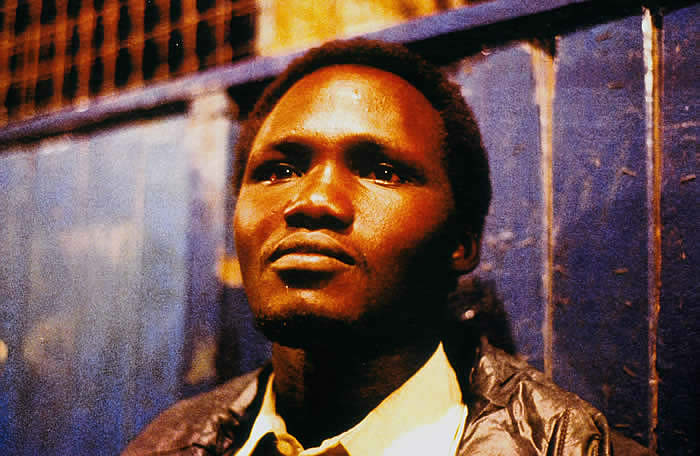
Stephen the Preacher Turkana, KENYA
Stephen Ouko had been posted in the “hardship” desert district of Turkana to save souls. Stephen was having a tough time of it because the indigenous Turkana people already had a religion and weren’t all that interested in Christianity. Stephen said a group of U.S. Baptists were busy translating Turkana into a printed language so that they could then translate the bible into Turkana, and this he believed would make his job much easier.
|
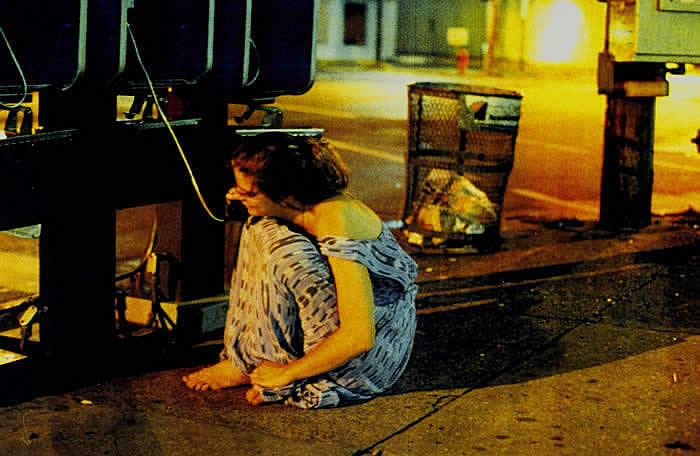
Rebecca Without A Phone Louisville, Kentucky U.S.A.
|
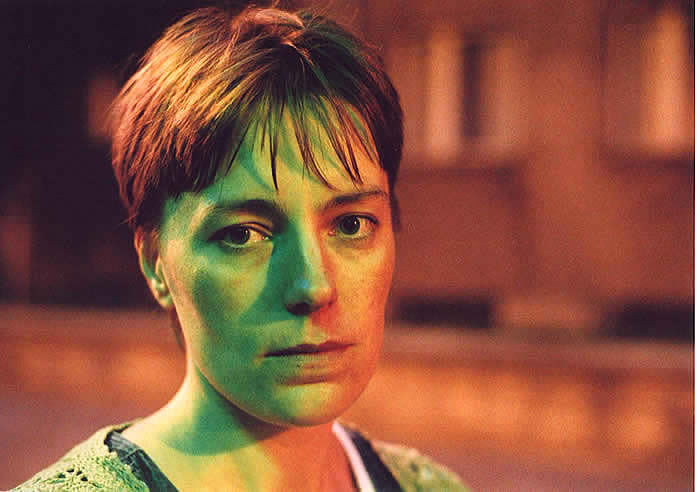
The Social Worker Tallin, ESTONIA
|
|
| |
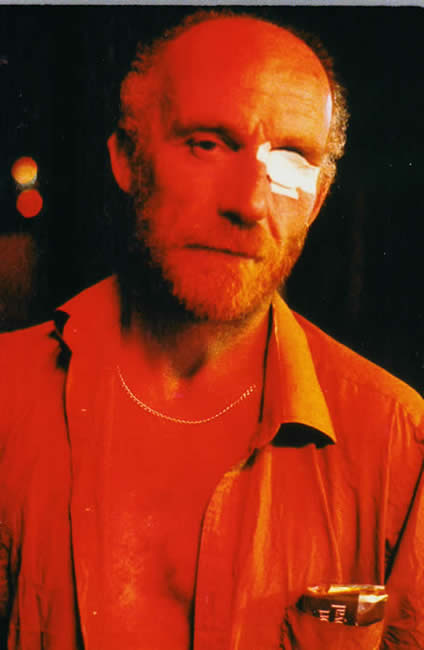
The Archaeologist and the Lost Glass Eye Luxor, EGYPT
He’d been in Egypt six months on a dig, was feeling homesick and lonely, and had begun drinking heavily. He lost his glass eye in a fight. He’d ordered a new one from Australia but it was going to take two weeks to arrive. He told me, “The sand getting in my eye is killer and I’m working in the friggin’ Sahara desert! ”
|
|
Grandmother and Child San Salvador, EL SALVADOR
I rarely got the chance to photograph babies as they were usually in bed by nightfall. But it was very hot and I was told that she couldn't sleep. Her grandmother was a bit suspicious of me but allowed the photos anyway.
|
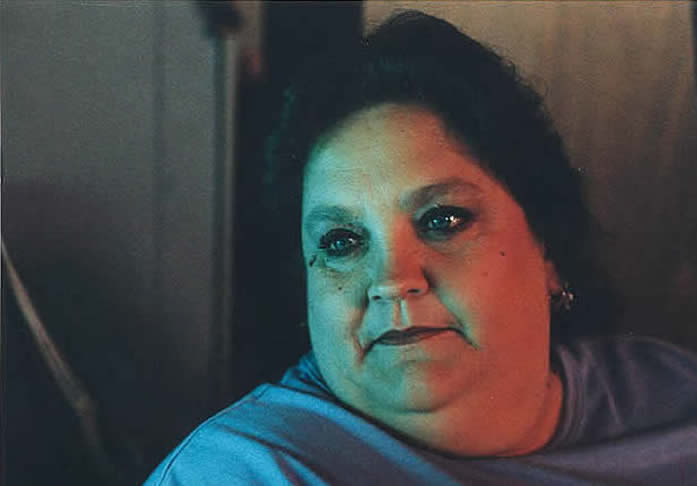
The Dew Drop Inn Lady Louisville, Kentucky U.S.A.
She was at the pool hall with a group of Mexican laborers. I wanted to take their photos but I had to clear it with her first. She wanted to make sure the photos wouldn't lead to their deportation. In talking to her I realized that she was actually the most interesting among them and took her picture instead.
|
|
|
The Night Wizard Malindi, KENYA
Night wizards are people in East Africa who torment you during the night. They usually try to scare you by throwing stones at your hut or by making strange sounds. I never actually laid eyes on one, nobody had, it was like their version of Bigfoot. This man however, is how I imagined a wizard to look.
|
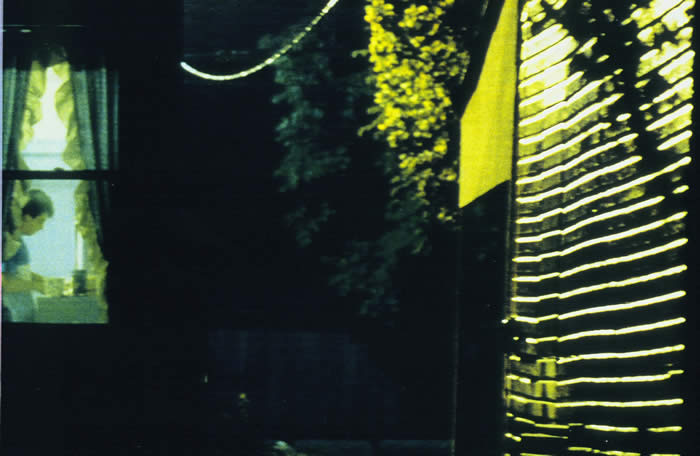
Green Lived Next To Yellow Louisville, Kentucky U.S.A.
|
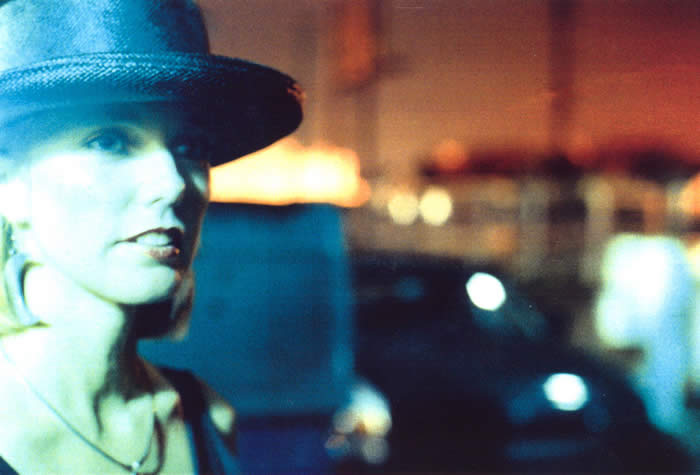
Manequin Lady Louisville, Kentucky U.S.A.
|
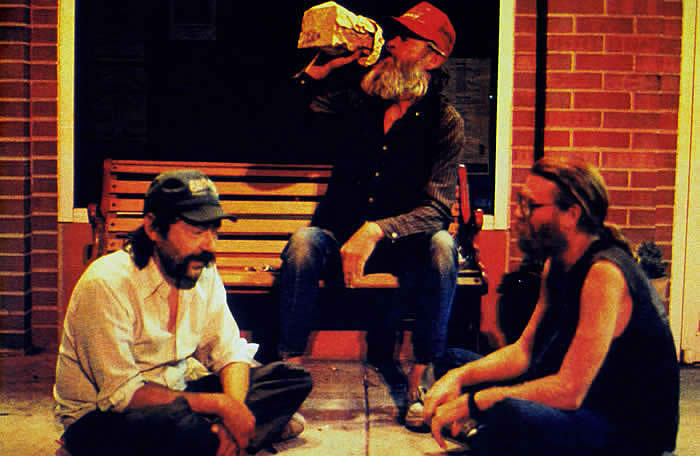
The Trinity of Security Louisville, Kentucky U.S.A.
They spoke very openly about their circumstances. One of the gentlemen said that he had a racist tattoo on his arm. Apparently, they couldn't stay at the shelter because of it. He told me, "Them boys a beat me up, over this damn tattoo." So they slept outside in a protective group.
|
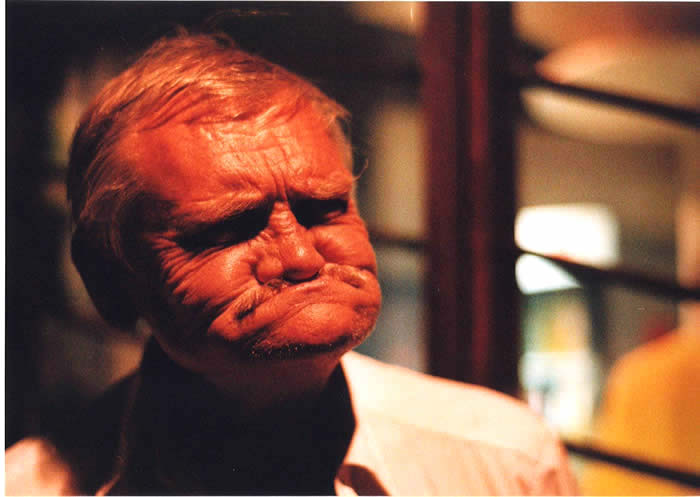
The Russian Dockworker Parnu, ESTONIA
He was pan-handling. He wanted his photo taken and proceeded to make faces. Afterwards he asked for money. I bought him a sandwich instead. We said goodbye and shook hands. He crushed my hand and I was forced to stop photographing for the night - it hurt for days. I’ve always wondered if it was intentional.
|
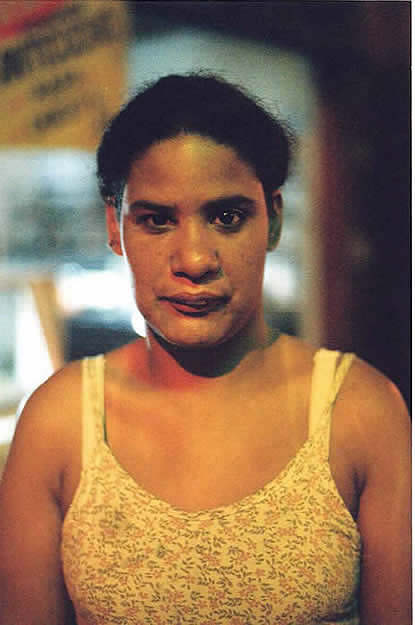
The Dressmaker Lima, PERU
Eliana Mabire did not want to pose but I insisted, for there was an unexplainable aura about her. After walking her into the light, her facial irregularities were revealed and I regretted my pushiness. Fortunately she enjoyed the experience and walked away with a smile.
|
|
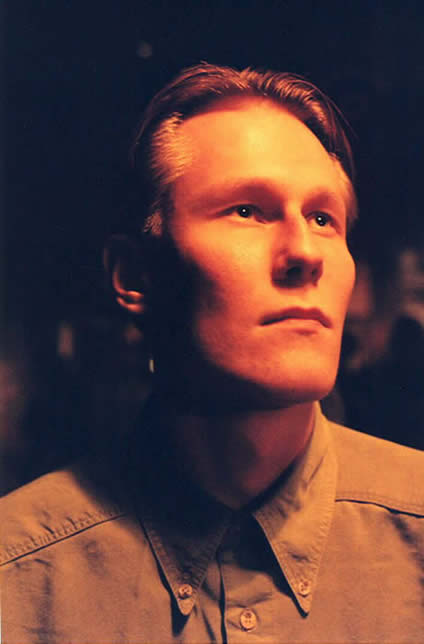
The Medical Student Helsinki, FINLAND
Matti Tuovinen agreed to have his photo taken but his father insisted that I take his first. His father was drunk and difficult. The sober Matti explained that they were in town celebrating his admission to medical school. His father, a farmer, did not go to university and was overjoyed at his son’s success. “Please pardon my father, his happiness is very big.”
|
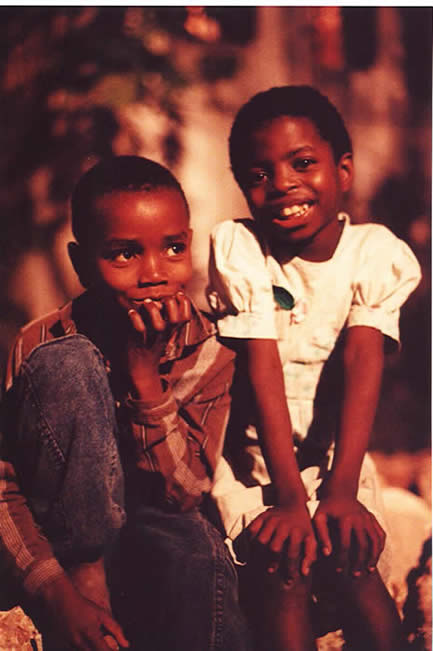
Eddie and Tatu Zanzibar, TANZANIA
Eddie and Tatu’s mother cleaned houses in the day. At night she fried and sold fish on the streets of Stone Town. After school each day they were at her side long into the night. They were playing on this pile of rubble when I ran into them.
|
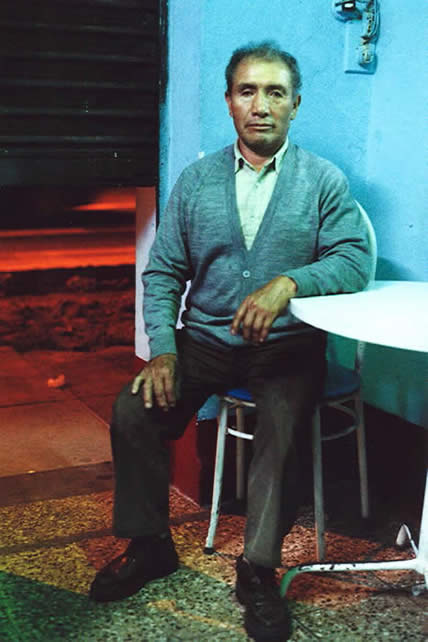
The General Lima, PERU
The general was retired. He told me of his great military exploits, including the squashing of the Shining Path. Before I could take this photo he asked that I not show his alcoholic beverage. It would reflect poorly on his reputation.
|
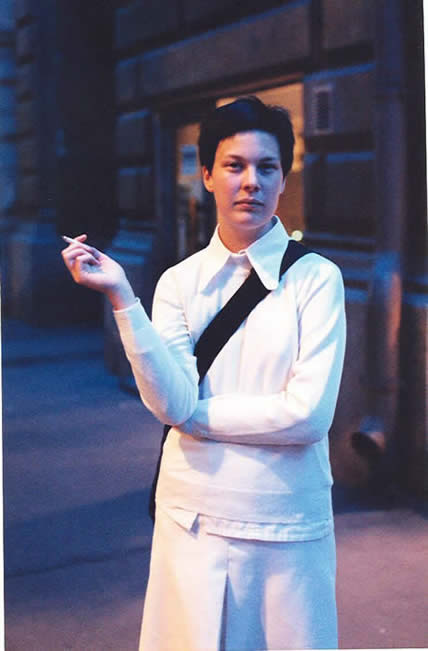
The Young Poet Helsinki, FINLAND
Johanna Turpeinen was 20 and living in a one room efficiency. She worked as a waitress but wanted very much to be an avant-garde poet. Her dream was to move to Paris and live the bohemian life. As she put it, “For now, the closest I can get is smoking this French Citane cigarette."
|
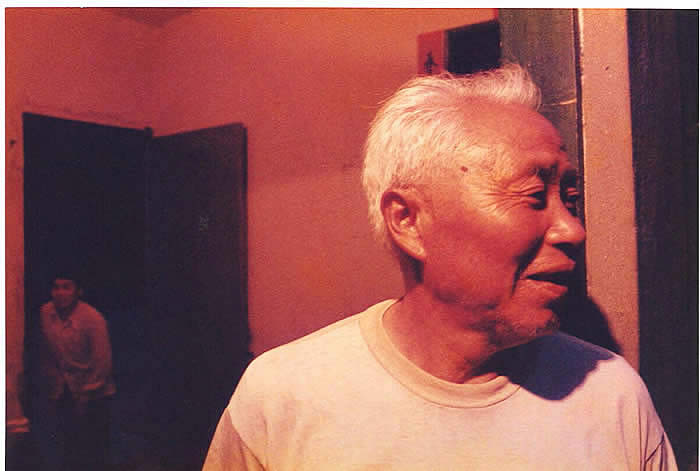
The Gate Keeper & The Hunchback Fujian, CHINA
They were a team. One manned the school gate and the other manned the school shop. Although their jobs required very little expertise or real exertion, they worked long hours - 6 1/2 days a week from morning into late evening. Surprisingly, these men enjoyed their work. They were the vigilant ears and eyes over all kept within the compound. Many thought their jobs were menial, when in fact, they had more power than most.
|
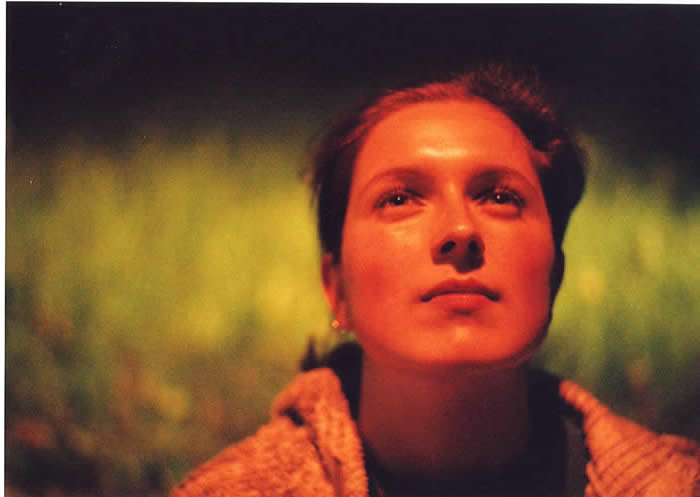
Heleri's Dream Parnu, ESTONIA
Heleri (17) and her brother Ulo (16) lived alone in the city of Parnu. Their parents lived two hours away in a small village. This arrangement allowed the children to attend a higher quality school. Heleri and Ulo both held jobs which paid their apartment rent. Heleri was very excited about the prospects of her country’s future. Her dream was to go to university and become a teacher like her parents.
|
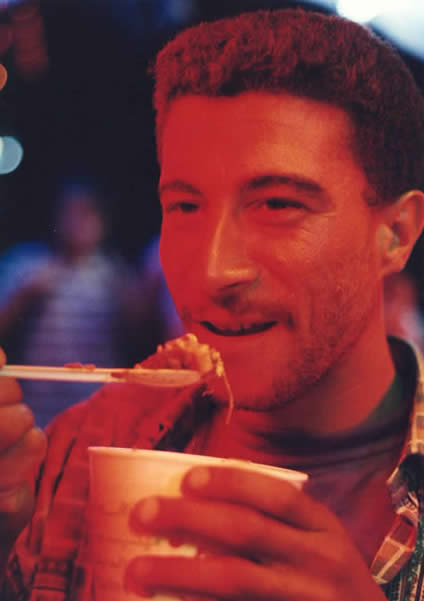
Boat Driver Eating Cairo, EGYPT
Hassam gave me permission to photograph. I took this photo and began to take a second when a hand covered my lens. Next a man began yelling and a crowd of 50 people quickly surrounded us. “She will use these photos against the people of Egypt!!! She will write about what we eat and mock us ... !!!” The crowd began mumbling and it was clear he was winning them over. My translator grabbed my arm and said, “Let’s get out of here!”
All images and text on this website are the copyright of Caren Cunningham,
no reproduction without written permission.
|
|
|



